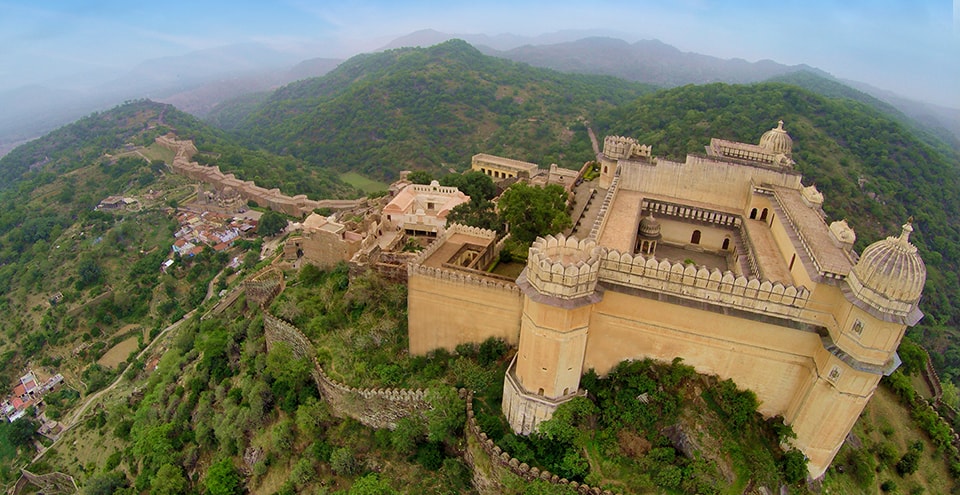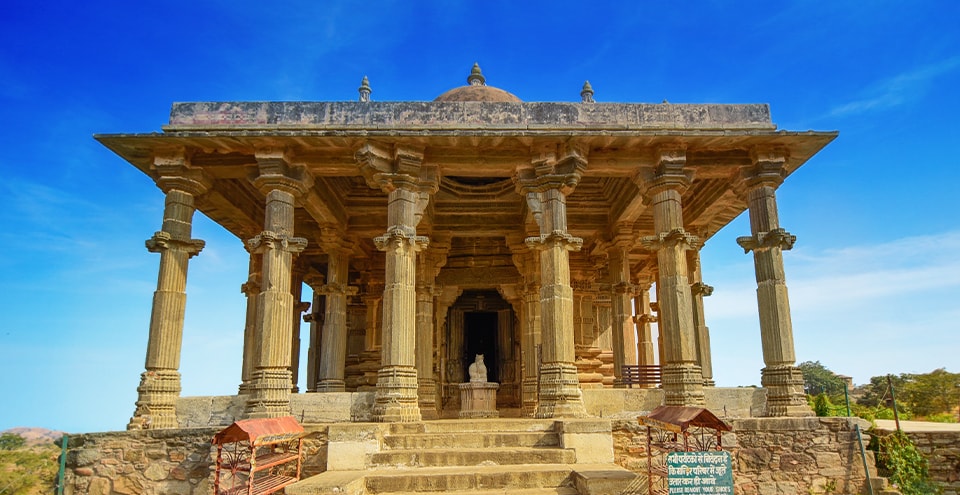
Rajsamand: A Journey Through Rajasthan’s Timeless Heritage
Nestled in the verdant hills of Rajasthan, Rajsamand is a hidden gem that offers a unique blend of history, natural beauty, and cultural richness. Often overshadowed by its more famous neighbors, this charming town provides an authentic glimpse into Rajasthan’s heritage and is a perfect destination for travelers seeking tranquility and exploration. Here’s why Rajsamand should be on your travel radar.

Kumbhalgarh Fort
Kumbhalgarh Fort, a majestic fortress located in the Rajsamand district of Rajasthan, India, stands as a testament to the grandeur of Rajput architecture. Built in the 15th century by Maharana Kumbha of the Mewar dynasty, this formidable structure is renowned for its imposing walls, which stretch over 36 kilometers, making it one of the longest continuous fortifications in the world. Perched on a hilltop at an elevation of around 1,100 meters, the fort offers panoramic views of the surrounding Aravalli Range. Its design incorporates an intricate network of bastions, watchtowers, and gateways, blending seamlessly with the rugged landscape. Inside, the fort houses numerous palaces, temples, and reservoirs, all adorned with intricate carvings and vibrant frescoes. Despite enduring centuries of wear and tear, Kumbhalgarh Fort remains a powerful symbol of Rajput resilience and ingenuity.

Rajsamand Lake
Rajsamand Lake, an exquisite man-made reservoir situated near the town of Rajsamand in Rajasthan, India, is an architectural marvel and a vital water source in the region. Constructed in the 17th century by Maharana Raj Singh I, the lake is renowned for its grandeur and historic significance. Spanning approximately 16 kilometers in length, it is one of the largest artificial lakes in Rajasthan. The lake is flanked by a series of elegant marble ghats, or stepped embankments, adorned with intricate carvings and pavilions, which enhance its aesthetic appeal. These ghats not only serve as scenic spots for visitors but also as functional areas for water management. Rajsamand Lake plays a crucial role in irrigation and water supply, supporting the agricultural needs of the surrounding areas.

NeelkanthMahadev Temple
The NeelkanthMahadev Temple is a very famous Shiva Temple which is located in the Kumbhalgarh Fort. The temple was built in 1458 AD and has a six feet high Shivling, made of stone. One of the unique featuresof this temple is the fact that you can enter it from all four directions, which is commonly referred to as a Sarvatobhadra temple.In addition to that, the temple has an open mandap that is visible from afar.Located east of the Vedi shrine, you can experience a beautiful light and sound show that is held at the Neelkanth Mahadev Temple every evening.The rustic ambience offered by the temple and its surrounding area is quite a sight in itself, turning the visitor in you into an ardent admirer.
Cultural Riches
Rajsamand’s cultural tapestry is as rich as its history. The local festivals and traditions offer a vibrant glimpse into the life of its people. The Rajsamand Festival, celebrated with great enthusiasm, is a blend of traditional music, dance, and local cuisine. It’s a wonderful opportunity to experience the warmth and hospitality of the locals.
The region is also renowned for its handicrafts, including intricate embroidery and traditional Rajasthani textiles. Visiting local markets and craft villages provides a chance to acquire unique souvenirs and support local artisans.
Natural Beauty
Beyond its historical and cultural landmarks, Rajsamand is blessed with natural beauty that invites relaxation and exploration. The Jaisamand Wildlife Sanctuary, located near the lake, is a haven for wildlife enthusiasts. It is home to a variety of species, including leopards, antelopes, and numerous bird species. The sanctuary’s diverse flora and fauna make it an excellent destination for nature walks and wildlife spotting.
Local Cuisine
No visit to Rajsamand is complete without sampling its local cuisine. The traditional Rajasthani fare, with its rich and robust flavors, is a treat for the palate. Dishes like dal baati churma, gatte ki sabzi, and ker sangri are local specialties that offer a true taste of Rajsamand’s culinary heritage.
Rajsamand is well-connected to major cities in Rajasthan, making it easily accessible for travelers. The best time to visit is between October and March when the weather is pleasant and ideal for sightseeing. Whether you’re exploring historic sites, savoring local delicacies, or simply soaking in the serene landscape, Rajsamand promises a memorable and enriching experience.
In conclusion, Rajsamand is a hidden gem in Rajasthan that offers a unique blend of history, culture, and natural beauty. Its serene lakes, majestic forts, and vibrant traditions make it a worthwhile destination for those looking to delve deeper into the rich tapestry of Indian heritage. So pack your bags and set out to uncover the many wonders of Rajsamand—an enchanting city that truly embodies the spirit of Rajasthan.
